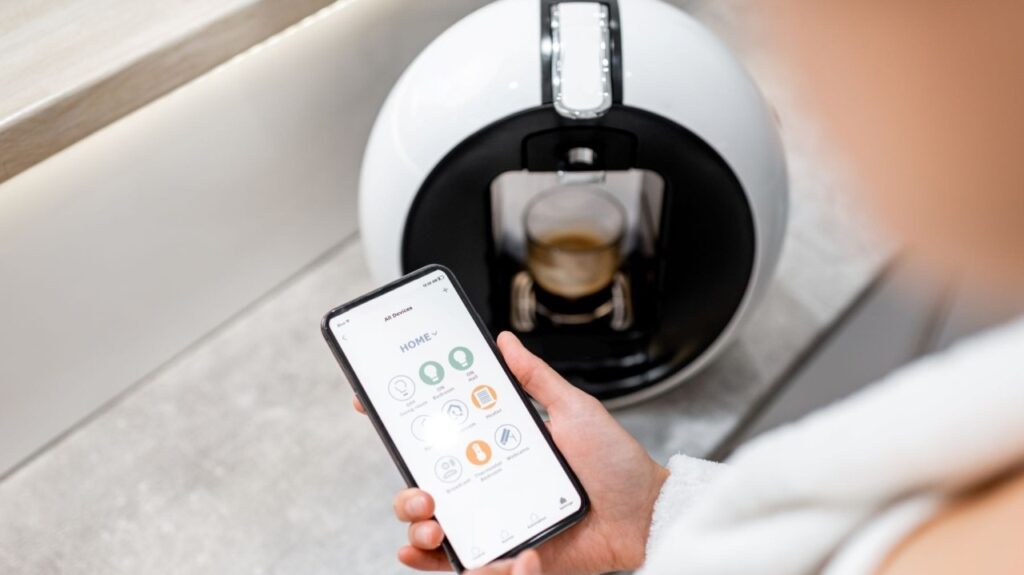You walked into the office early to beat the rush, powered up your laptop, and wandered into the break room for your first cup of coffee. As the machine whirred to life, you noticed something odd on the tiny display: “Wi-Fi Connected.” Wait—why does the coffee maker need internet access?
It’s a good question. And not just because no one’s really eager to get hacked through their latte. Today’s offices are increasingly filled with smart devices that were designed to make work life more efficient, more convenient, and maybe even a little cooler. But those very devices—coffee makers, smart TVs, thermostats, and printers—may be the weakest link in your cybersecurity chain.
So what happens when the break room becomes a backdoor?
IoT in the Wild—What’s Lurking in Your Office?
Most of us don’t think twice about what’s connected to the office network. We secure the computers. We manage the servers. We have password rules for employees. But what about the smart lightbulb in the hallway? Or the receptionist’s digital picture frame? Or the virtual assistant in the meeting room that’s always listening for a wake word?
Smart tech is everywhere—on desktops, in ceilings, on walls. In many offices, you’ll find Wi-Fi-enabled TVs, security cameras, printers, door locks, projectors, thermostats, fridges, and yes, coffee machines. These are all examples of IoT, or Internet of Things, devices: everyday objects that connect to the internet and, therefore, to your business network.
They’re easy to ignore because they don’t feel like technology in the same way a workstation or mobile phone does. But every single one of them is a potential gateway for an attacker.
The Real Risk—What Could Go Wrong?
If the idea of someone hacking a coffeemaker sounds like science fiction, think again. Cybercriminals are opportunistic, and they’ll look for the path of least resistance. When you connect a device to your network that has weak security—or worse, no security—it becomes an open window into your business.
Once inside, attackers can “pivot” through your network. That means they can use a hacked printer, camera, or other under-protected device to move deeper into your systems. They may hunt for sensitive customer data, confidential files, financial records, or access to critical services. In some cases, they might lock your data and demand a ransom. In others, they may simply snoop and silently collect information.
Even if no major data breach occurs, an attack through an IoT device can lead to costly downtime, lost productivity, damaged client trust, and expensive recovery efforts.
Why These Devices Are So Vulnerable
IoT devices are designed for convenience, not security. Many come with default usernames and passwords that are never changed. Some don’t allow password changes at all. Others have outdated firmware—software that runs the device—but no easy way to update it. And in some cases, updates aren’t even offered after the device is sold.
Adding to the risk, many devices are set up quickly by third parties or non-technical staff and then forgotten. Who manages the smart board in the boardroom? Who updates the firmware on the building’s climate control system? If your team doesn’t know, then no one is securing it.
Even when an IoT device is installed with good intentions, it often isn’t included in ongoing security protocols like regular audits, password updates, or patch management. That’s what makes these devices so attractive to hackers—they’re easy to overlook and rarely monitored.
How IoT Breaches Have Happened in Canada
While IoT-based breaches don’t always make headlines, Canadian cybersecurity reports continue to flag these devices as emerging risks—especially in small to mid-sized businesses, municipalities, and healthcare environments. According to the Canadian Centre for Cyber Security, threat actors have increasingly been scanning for poorly secured devices across the country, targeting known vulnerabilities in everything from routers to connected cameras.
One 2023 report by CIRA (Canadian Internet Registration Authority) warned that IoT devices in Canadian businesses were frequently exposed to the internet with no password protections or outdated firmware, opening the door to potentially devastating attacks. And while these vulnerabilities may not always be the root cause of a breach, they’re often the starting point.
The scary part? Most companies don’t know they’ve been breached until long after it happens—if ever.
How to Lock Down the Break Room (And Everything Else)
The good news is that you don’t have to rip out your smart devices or go back to pen and paper. You just need to treat these gadgets with the same level of scrutiny you give your laptops and servers. The first step is visibility: take inventory of every connected device in your office. That includes not just your desktops and phones but everything that touches the network, from digital whiteboards to smart doorbells.
Once you know what you’re working with, secure it. Change all default usernames and passwords immediately. Disable any features or ports you don’t need. Keep device firmware up to date. Many businesses are surprised to learn that updates are available for things like coffee makers or lighting systems—so check the manufacturer’s website and set a schedule for review.
Another smart move? Segment your network. Keep IoT devices on a separate Wi-Fi network from your sensitive business systems. That way, even if someone breaches a smart device, they can’t use it to get deeper into your operations.
And when choosing new tech, ask your vendors: “How is this device secured?” If they don’t have an answer—or if they shrug it off—it might be time to look elsewhere.
Policies, People, and the Coffee Pot
Cybersecurity isn’t just about firewalls and passwords—it’s about people and processes, too. It’s important to develop policies that guide how connected devices are brought into the workplace. Can employees install their own smart clocks or plug in Bluetooth speakers? Who approves new devices? And who manages them after they’re installed?
Even small businesses can benefit from a clear chain of responsibility when it comes to IoT. Whether it’s your internal IT team or an external provider, someone should be assigned to monitor, update, and secure all connected devices.
Don’t forget to include this in your employee training, too. Most staff wouldn’t think twice about plugging in a smart device if it makes their job easier or the workspace more comfortable. But a little education goes a long way in helping everyone understand the risks.
It’s Not About the Coffee—It’s About Control
The smart coffee maker is just a symbol of a much larger shift happening in today’s offices. As workplaces adopt more smart technologies, we gain convenience—but we also lose visibility and control unless we plan for it.
Cybersecurity used to mean protecting computers and servers. Now it means protecting everything that talks to the internet. And in a world where fridges, clocks, and printers are all chatting with your router, that’s no small task.
The key is to think proactively, not reactively. Don’t wait for something to go wrong before securing your devices. By the time a breach occurs, the damage may already be done.
Keep the Coffee, Lose the Risk
Nobody’s saying you need to ditch your smart gadgets. Go ahead and enjoy the programmable coffee, the motion-activated lights, and the self-locking doors. Just make sure they’re part of your cybersecurity strategy—not a loophole in it.
If your coffee maker has a Wi-Fi password, that means it’s connected. And if it’s connected, it needs to be protected—just like everything else.
Because in today’s workplace, cybersecurity doesn’t stop at the server room. Sometimes, it starts in the kitchen.
At Adaptive Office Solutions, cybersecurity is our specialty. We prevent cybercrimes by using analysis, forensics, and reverse engineering to detect malware attempts and patch vulnerability issues. By investing in multilayered cybersecurity, you can leverage our expertise to boost your defenses, mitigate risks, and protect your data with next-generation IT security solutions.
Every device connecting to the internet poses a cybersecurity threat, including that innocent-looking smartwatch you’re wearing. Adaptive’s wide range of experience and tools fills the gaps in your business’s IT infrastructure and dramatically increases the effectiveness of your cybersecurity posture.
To schedule a Cyber Security Risk Review, call the Adaptive Office Solutions’ hotline at 506-624-9480 or email us at helpdesk@adaptiveoffice.ca




